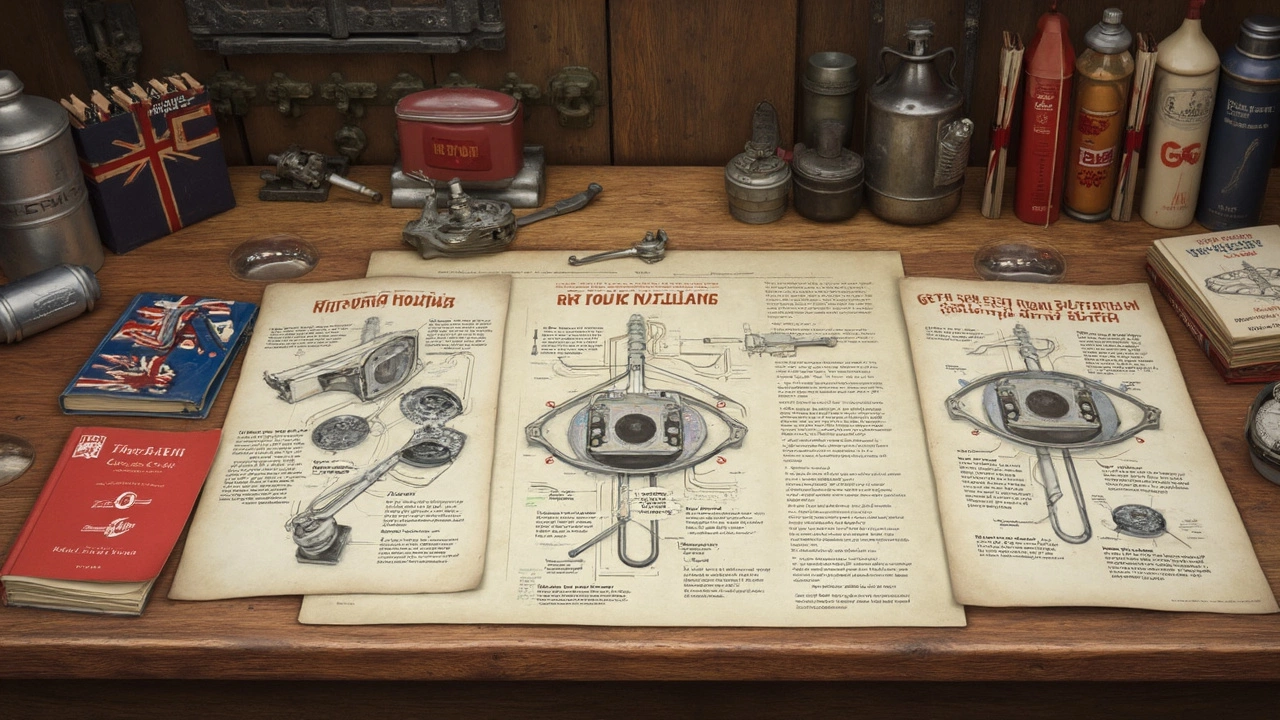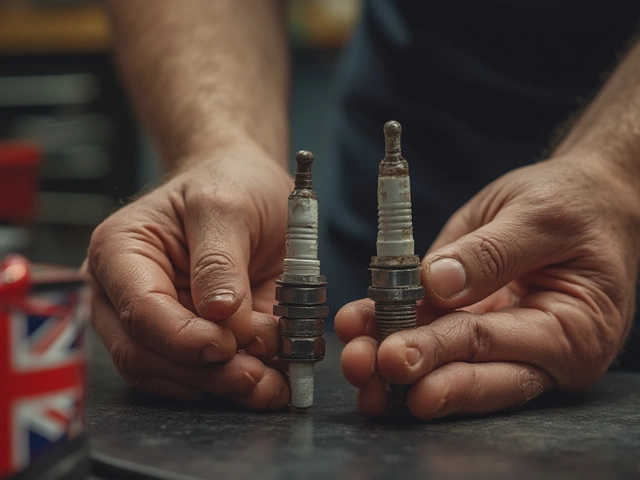So, you just got a new clutch, slipped it into place, and now it's slipping right back at you? Frustrating, right? Let's break this down. First off, a new clutch is supposed to grip like a vise, not slip like a banana peel. But sometimes things don't go as planned.
A common reason for a clutch slip, even fresh out of the box, is improper installation. If a clutch isn't aligned just right, or if there's even a tiny speck of grease on the disc, you're going to have trouble. Trust me, it’s like trying to button a shirt while half-asleep.
But it’s not just about what’s on the surface. Sometimes, deeper issues like a worn flywheel or a weird crankshaft alignment cause problems. It’s like that mystery squeak in your floorboards—it could be anything. An experienced mechanic, or even just a bit of patience and research, might save you.
- Why Your New Clutch Might Slip
- Common Mistakes During Installation
- Choosing the Right Clutch Kit
- Maintenance Tips to Prevent Slipping
- When to Seek Professional Help
Why Your New Clutch Might Slip
Finding out that a brand new clutch is slipping can be as surprising as running into your teacher at the pub. But it happens, and there are solid reasons why.
The first thing to look at is the **installation process**. A lot of slipping clutches are just victims of a rushed or careless install job. Even the best clutch kits need precision to fit right. If the torque isn’t applied correctly during the installation, you’re looking at a slipping disaster.
Another factor can be the clutch alignment tool. Skipping this tool or using it incorrectly means your clutch isn’t aligned the way it should be, resulting in poor contact and, you guessed it, slipping.
Dirt and grease are like the arch-nemeses of clutches. If the flywheel or pressure plate has any grime, your new clutch won't stand a chance. Make sure everything is squeaky clean before anything’s put in.
"A well-installed clutch should be your car's best friend, not its worst enemy," says Cole Turner, a seasoned mechanic known for his expertise in transmission systems.
Sometimes, the problem isn’t even with the clutch itself. A worn-out flywheel could also lead to slipping. It’s like trying to write on an old, bumpy desk—it just doesn't work smoothly.
Oh, and let’s not forget about hydraulic issues. If your hydraulic release system has air bubbles or a leak, you won't get the pressure you need for the clutch to function properly.
For the data buffs, here's a table showing some of the common causes of clutch slippage and their approximate percentage:
| Cause | Percentage |
|---|---|
| Poor Installation | 40% |
| Contaminated Parts | 25% |
| Misaligned Clutch | 15% |
| Worn Flywheel | 10% |
| Hydraulic Problems | 10% |
Keeping all this in mind can save you a lot of headaches and a wallet full of cash. So, if your new clutch is slipping, run through these checks before giving in to the frustration.
Common Mistakes During Installation
Even if you've got a brand new clutch, mess ups during installation can have it slipping and sliding instead of gripping like a pro. Here are some mistakes that people often stumble on:
- Improper Alignment: Aligning the clutch with the flywheel and pressure plate needs precision. If it's even slightly off, you're looking at uneven wear or a slip as soon as you hit the gas.
- Skipping Flywheel Resurfacing: Imagine putting new wallpaper over old, flaky stuff. The flywheel should be smooth, and sometimes resurfacing is necessary before installing a fresh clutch. Ignoring this can cause quick wear.
- Contamination of Clutch Disc: Grease or oil is your clutch’s nightmare. A drop here or there can lead to slipping. Make sure hands and tools are clean and dry when handling the new clutch.
Jeff Walters, a well-known auto mechanic from "Clutch Masters," once said,
"The devil's in the details. Even a small oversight during installation can undo all your hard work."
So, double-check everything. Make sure those bolts are torqued right, alignment tools are used correctly, and every part of the clutch kit is handled with care. Getting things right during installation is crucial for keeping your clutch running smoothly.

Choosing the Right Clutch Kit
Picking the right clutch kit is crucial if you want to dodge future headaches. It’s not just about grabbing the first option you see online. No, you’ve got to look at what fits your specific car model, your driving style, and what you’re actually expecting from the clutch kits.
Start with the basics: check your vehicle's manual for specifications. They’ll usually give you the lowdown on what's best in terms of compatibility. Ignoring this is like trying to fit a square peg into a round hole. Seriously, it’s essential.
Next, think about your driving environment. Are you just cruising around town, or are you pushing your car to its limits on track days? For regular daily driving, a standard OEM (Original Equipment Manufacturer) clutch kit usually does the trick. But if you're more adventurous or your car's packing a turbo, you might want something beefier like a performance clutch.
Here’s a pro tip: don’t skimp on brands. You might be tempted by that super cheap clutch kit from some no-name brand, but quality matters. Trusted brands tend to have better build quality, meaning less slipping and longer durability. A small investment now could save you a bigger expense down the line.
- OEM Clutches: Perfect for most drivers who just need consistent, reliable performance.
- Stage 1 Performance Clutches: A bit of extra grip for those who like their cars to have a little more punch.
- Stage 2 and Beyond: These are for serious enthusiasts or modified cars that need to handle increased power.
If you're unsure, sometimes asking around in online forums can be a goldmine. Other car owners there will share their experiences, helping you make the right choice.
Modern clutch kits even come with nifty features like self-adjustment, which can be super handy if you’re not keen on constant tweaks. They're designed to provide a consistent pedal feel and longer life, which is neat if busy is your default mode.
Maintenance Tips to Prevent Slipping
Alright, let’s keep that new clutch slipping scenario just a nasty memory. Here’s how to make sure it stays that way. Regular maintenance is more than just a good idea—it's a must.
First up, clean surfaces are crucial. When you're dealing with clutch components, any grease or oil can turn your smooth drive into a slip-and-slide. Make sure all parts are squeaky clean before installation. Check that flywheel too; a scratched or warped flywheel might make a new clutch act old before its time.
Next, it’s all about adjustments and checks. Regularly inspect the clutch pedal free play. Too much or too little can cause the clutch to not engage properly, leading to slipping. Adjust pedal travel to manufacturer specifications; it’s usually in the sweet spot of about 1-1.5 inches.
- Check for leaks—any fluid on the clutch could be bad news.
- Keep an eye on clutch cable tension if your car uses one. Over-tightened cables can lead to slipping.
- Use the right type of clutch fluid for your vehicle. Mixing fluids might seem harmless but can cause big issues down the line.
Driving habits matter too. Riding the clutch, or keeping your foot on the pedal when you don’t need to, can lead to premature wear. Treat the clutch like a friend, not a punching bag. Let’s not forget about timely inspections by a pro, especially if you notice any slipping even after following these tips. Sometimes, the problem might be hidden in plain sight.

When to Seek Professional Help
Alright, so you've tried everything: checked the installation, ensured your parts are clean, and even peeked at a YouTube tutorial or two. But if your new clutch is still got a mind of its own, it might be time to call in the pros. There are just some things that are better left to the experts, especially if you don't want to mess up the rest of your ride in the process.
One major sign that you need a professional is persistent slipping, despite proper installation and usage. This might signal deeper mechanical issues lurking under the hood. According to automotive expert Martin Halliday, "When the usual tweaks don't work, and you’re facing constant clutch slipping, it’s probably more than just a bad day for your vehicle."
Another clue? Weird noises. If your vehicle's making grindy or clunky sounds whenever you engage the clutch, don't shrug it off. These noises can mean misalignment or even parts wearing out prematurely, which, if not addressed, could lead to more costly repairs.
Here's a quick checklist to know if it's time to dial up your trusted mechanic:
- Noticeable burning smell while driving.
- Vibration or chattering when the clutch pedal is used.
- Difficulty in changing gears or the car struggling to move even in gear.
Lastly, if you've just installed a clutch kit but aren't seeing the improvements you were promised, it could be mismatched with your vehicle's needs. Ensure you've selected the right kit for your car's make and model. A professional can help verify this and suggest alternatives if needed.
Remember, a mechanic's experience can save you a lot of head-scratching and potentially extend the life of your car. After all, you’d rather spend a little on expert advice now than a lot on a gearbox later.






